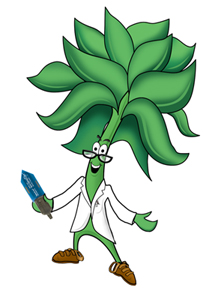Importance of Measurement in Agriculture
October 21, 2014 04:00 AM

Importance of Measurement in Agriculture
Agriculture plays a large role in our society, employing about one third of the world’s available work-force, globally. Cultivated land use has increased four-fold over the past two centuries but has remained fairly constant in the US for the past few decades. Efficient use of this land is essential to achieving key goals of healthy plants and increased productivity and profitability. This can be achieved with the help of more efficient agricultural practices to increase output while minimizing input costs that can range from materials to electricity to labor along with the valuable natural resource of water. Measurement can greatly aid in this overall goal to improve plant health and yields, to preserve valuable resources, to use inputs more effectively, and to minimize the overall impact on the environment.
Site-specific measurements in your microclimates offer both immediate and relevant data for your particular operation and are useful aids to help predict, manage, and prompt corrective action, as needed. Readings can be made on an occasional or ongoing basis with either a portable device or a continuous monitor, typically fitted with logging or alert capabilities.
Weather monitoring, for example, offers a variety of measurement options that can be tailored for your specific operation including light (see more about Light Measurement) for optimized photosynthesis and overall plant growth and health, leaf wetness and relative humidity which can affect disease pressures, soil moisture to ensure moisture penetration and to schedule irrigation events, along with temperature, wind speed/direction, rainfall and more. Evapotranspiration (see more about ET) can be calculated to help schedule irrigation events and to assist with IPM (integrated pest management) decisions. Insect and disease models can forecast risk and assist with pesticide treatment schedules and provide documentation for these decisions.
Other common measurements include nutrient levels to evaluate plant, soil, and input levels, detect plant stress early, and time fertilizer applications. pH measurements help confirm the availability of nutrients in your soil as well as the effectiveness of fertilizer solutions, electrical conductivity (see more about monitoring salinity) to evaluate soils, irrigation water and fertilizer solutions to avoid nutrient deficiencies, and compaction to determine soil strength.
Operation-specific and microclimate measurements can be very convenient, affordable and, most importantly, can ultimately help you to make informed decisions, optimize field management, and utilize more efficient practices in so many facets of your operations including fertilizer and herbicide/pesticide applications, irrigation schedules, timely reaction to frost risk, harvesting, storage and transportation, and the overall growth and management of healthy crops.
All the best,

Related Links:
LightScout Light Meters
WaterScout Soil Moisture Sensors
Nutrient Meters
pH Meters
Electrical Conductivity Meters
Back